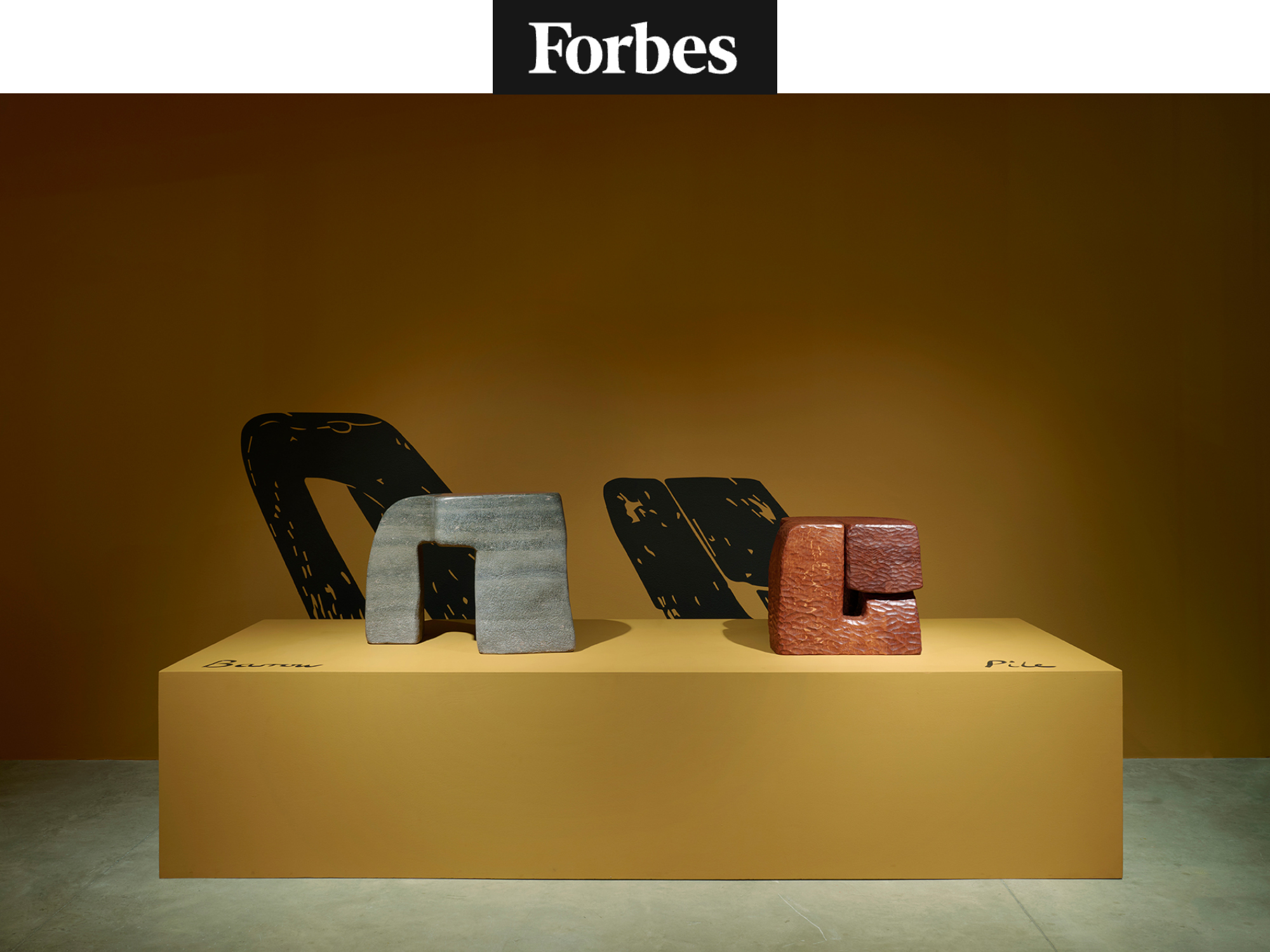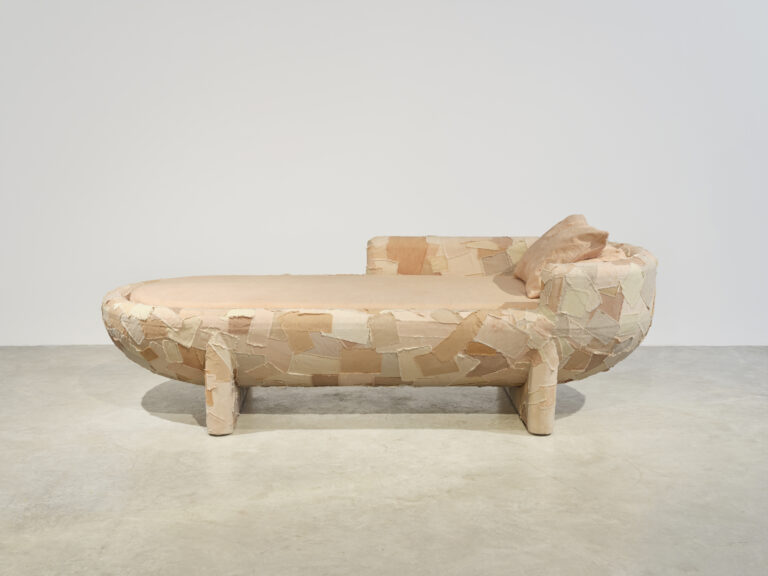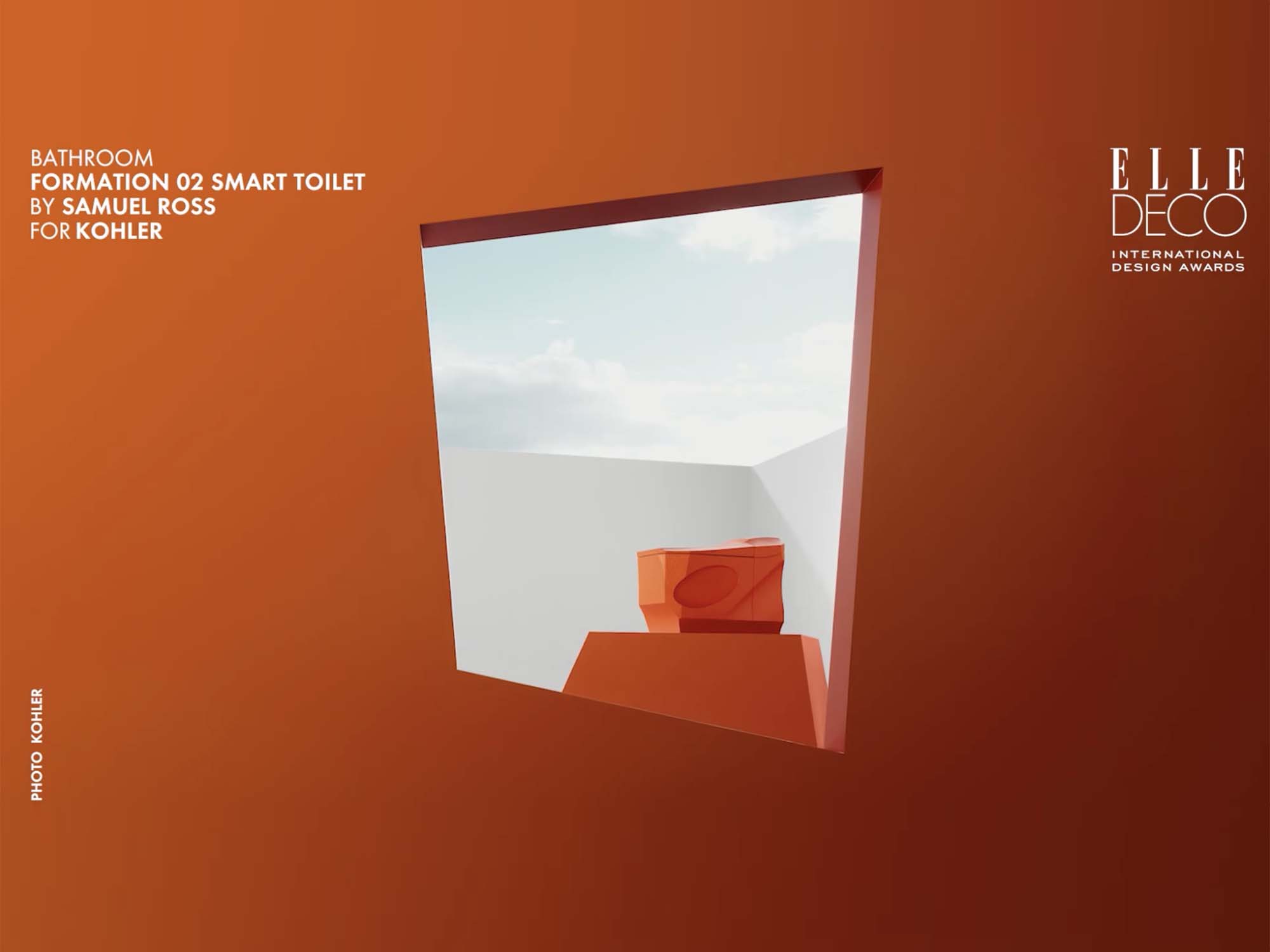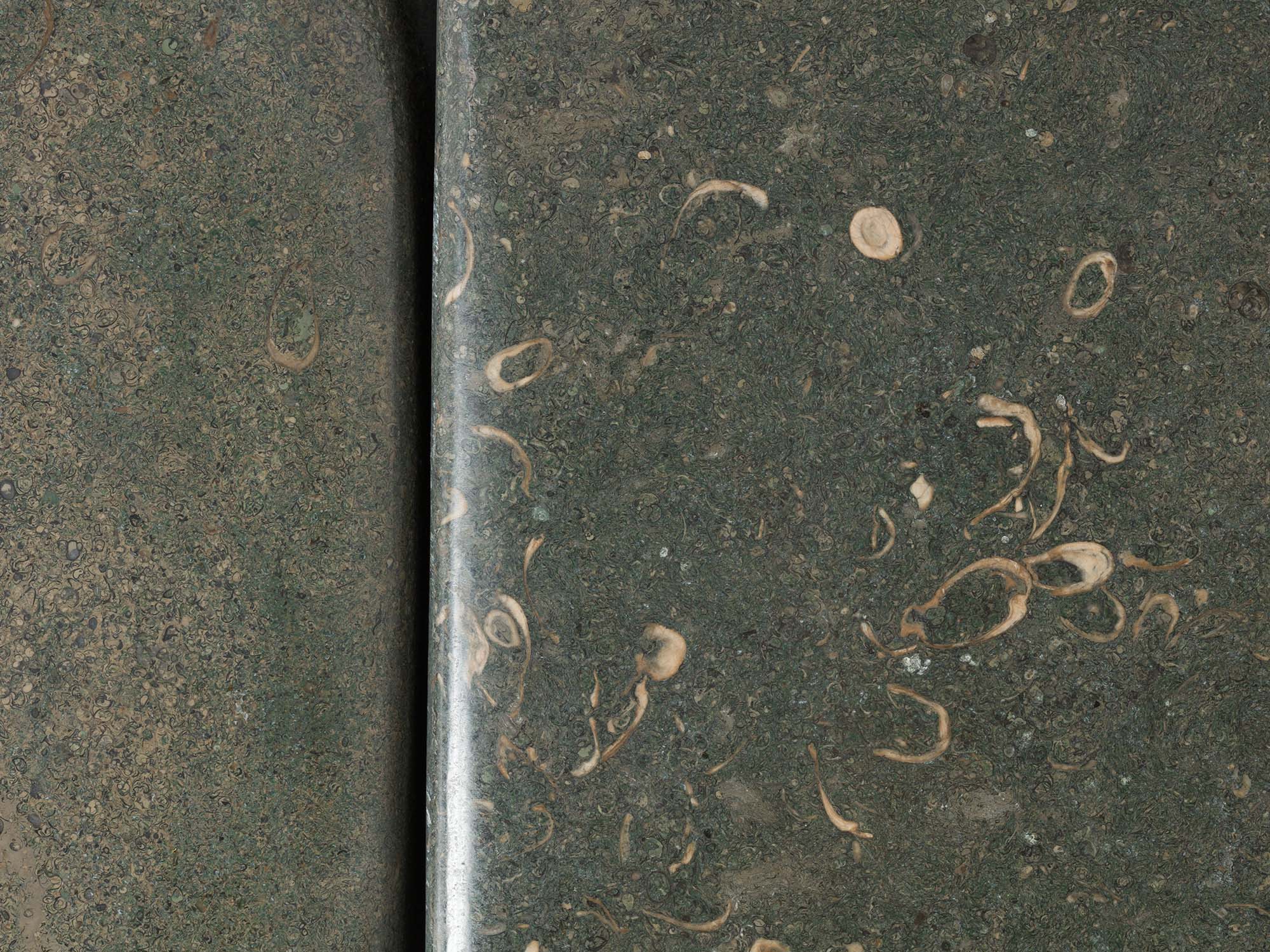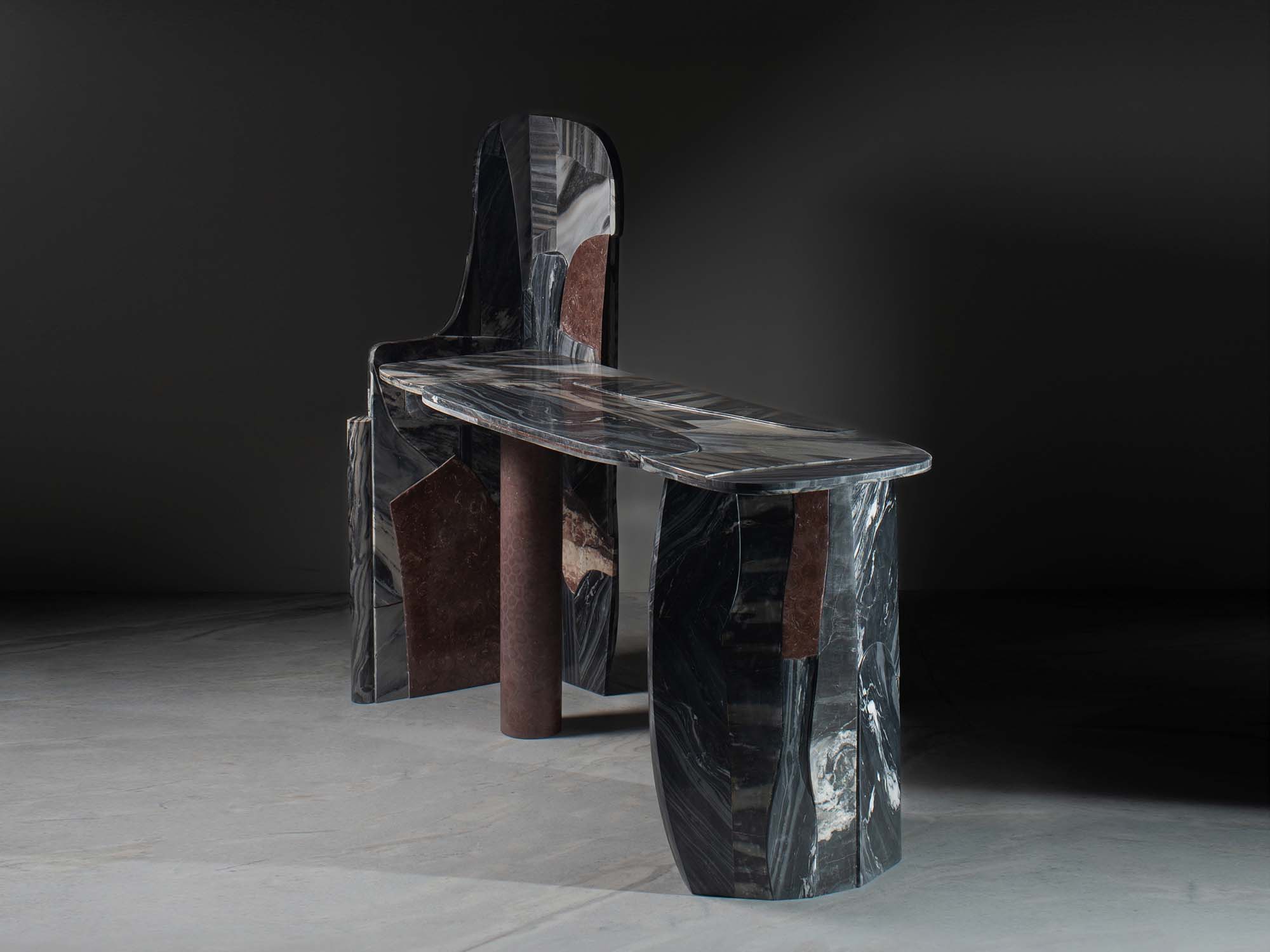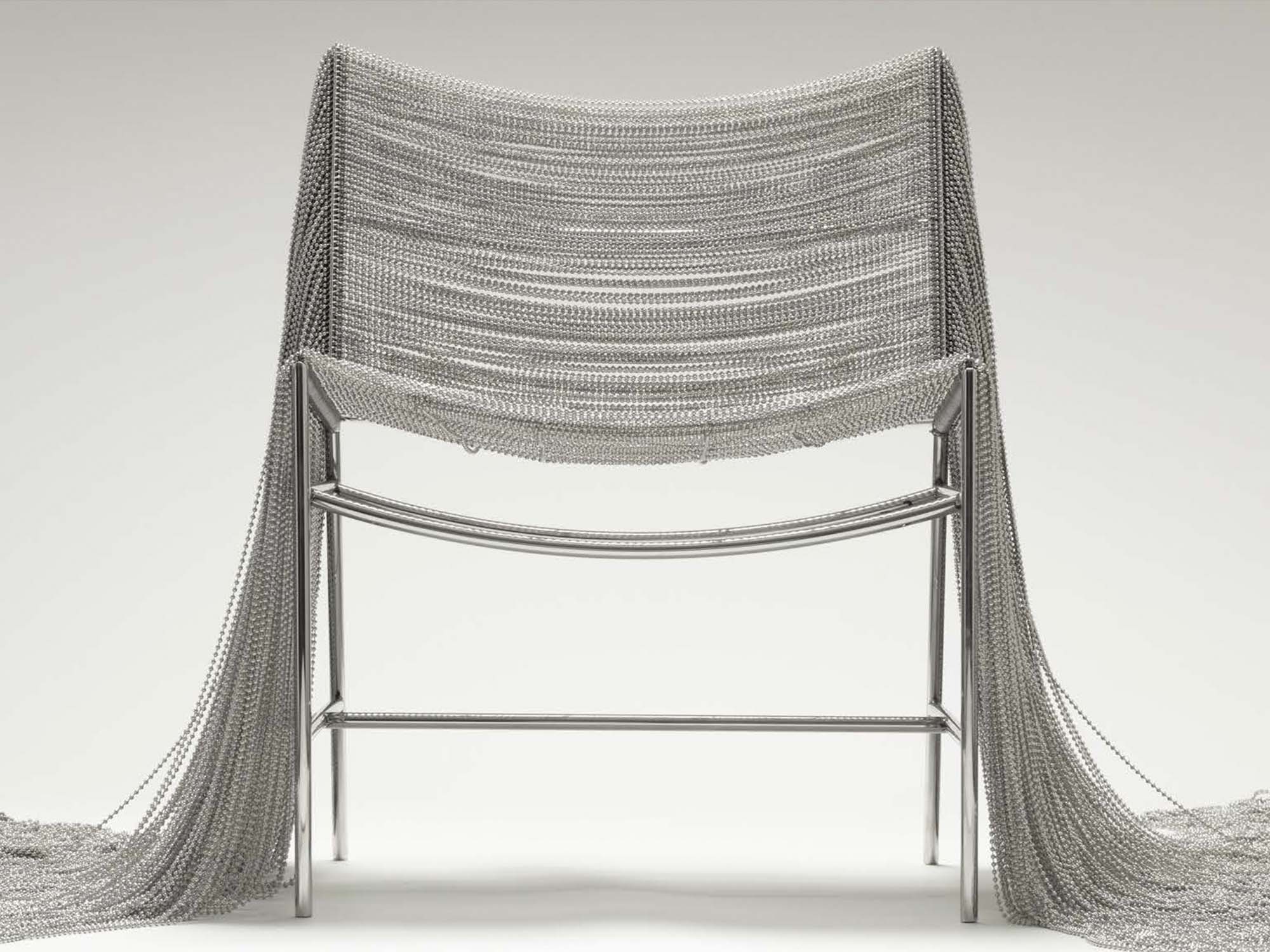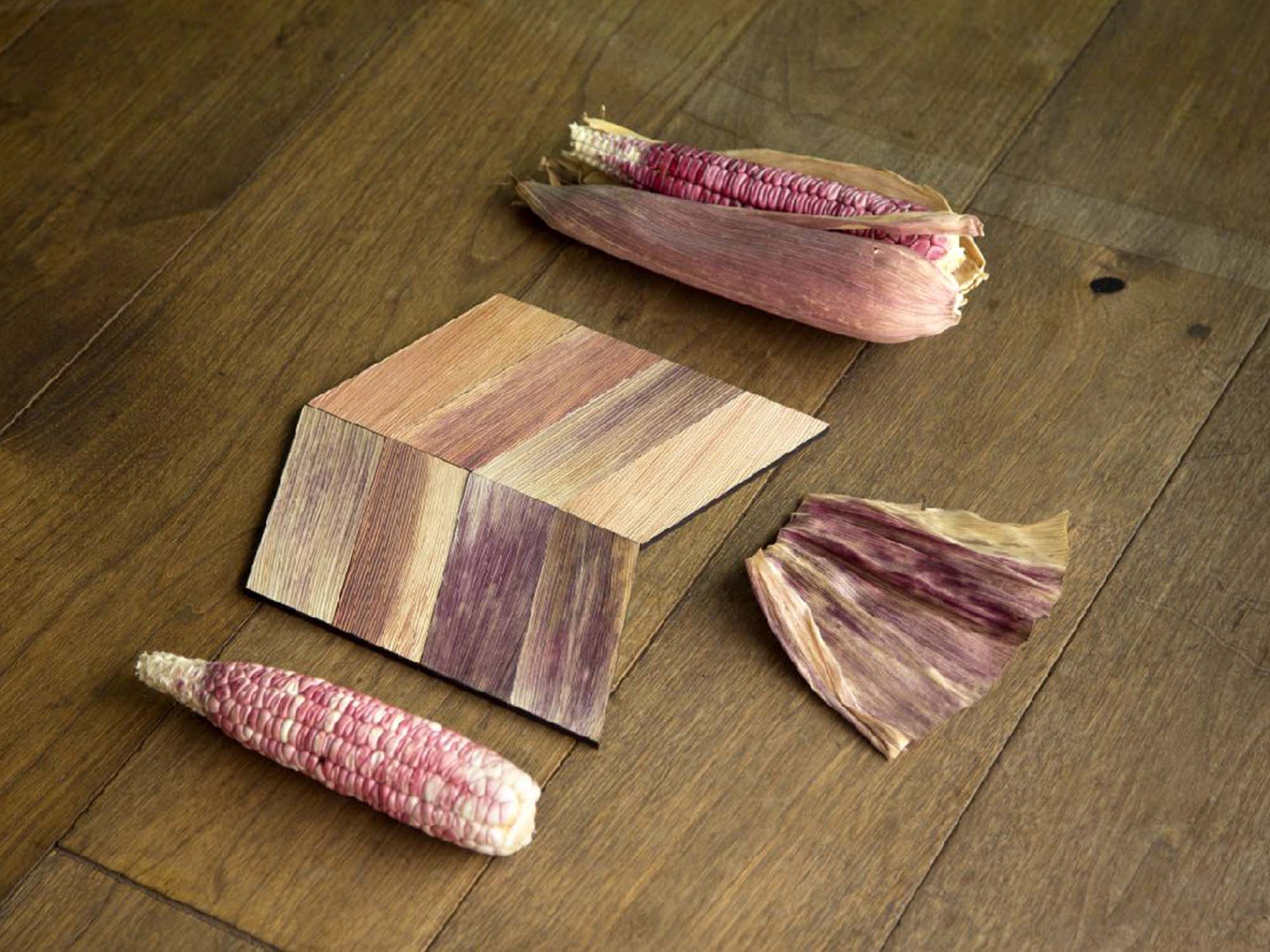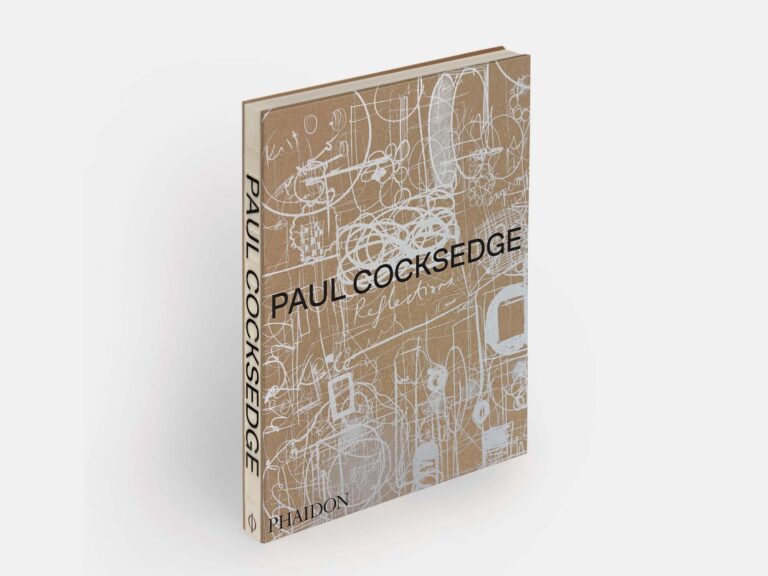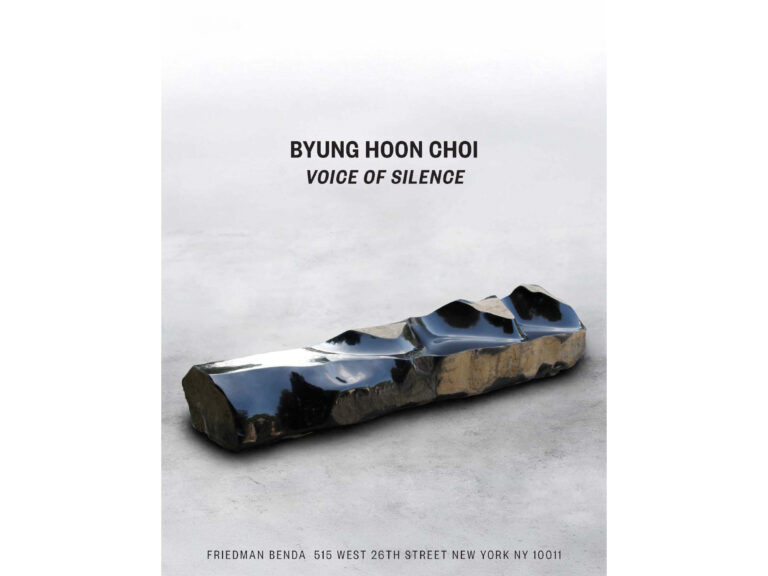The British Designer’s stone and oak furniture is giving sophisticated and ultra-stylish Flintstones vibes
By Rima Suqi
“This collection is very special to me,” revealed Faye Toogood as she toured a group through her latest exhibition at Friedman Benda gallery in New York City. “It’s quite a quiet collection and a reflective collection. As I’m getting to the ripe old age of 50 I think the significance of my work is changing. I’m finding a way to connect more to nature.” Assemblage 7: Lost and Found II is her fourth solo exhibition with the Chelsea gallery, which also represents Daniel Arsham, Ini Archibong and Najla El Zein. Most of what’s currently on view is being shown in New York for the first time after exhibitions in Los Angeles and the United Kingdom.
The limited edition pieces, which are all functional, are displayed in a room painted in Farrow & Ball “Earth,” a mustard-like color Toogood created for the buzzy British paint brand. All are positioned on plinths also painted in that same color, and bearing names (Hill, Cairn, Lode) inspired by the landscape. Behind most of them are black linocuts that Toogood created and strategically placed on the walls to give the idea of the pieces casting shadows in the space. A weighty vibe for weighty pieces.
All were hand-crafted from Purbeck marble or English oak. Fun fact: it turns out that Purbeck marble isn’t a marble, but rather a rare limestone teeming with fossils, which are clearly visible on the finished pieces.
Marc Benda was quick to point out that “there’s just one family quarrying this stone, and only two or three stone masons we could trust to work with it.” The oak, on the other hand, was “dredged out of peat bogs that are hundreds and thousands of years old, so they are incredibly special pieces,” Toogood explained.
The London-based designer, who worked as an editor at World of Interiors magazine before establishing Studio Toogood at her kitchen table in 2008, carved wax and clay maquettes of all these pieces that then became full-scale models rendered in Balsa wood or Styrene.
These full-scale samples bore all the desired markings of the finished works, in various shapes and sizes that the craftsmen would later chisel into wood or stone.
“We used a variety of different shaped chisels to create a scalloping effect,” she explained. “Some are months in the making. The stone pieces take the longest, two to three months for the whole process from finding the right stones to getting it all carved.”
The resulting muscular, monolithic works (think: sophisticated, ultra-stylish Flintstones) truly show the hand of the artisans in the United Kingdom (stone) and Czechoslovakia (wood) who created them.
“There’s an almost prehistoric feel to some of them,” she observed. Interlocking slabs of wood and stone are incredibly textured. Most are completely covered in chisel marks, resembling a modern version of the treasures unearthed in archeological digs. There’s a quiet but powerful energy to them, which could be described, in Toogood’s words, as “their moment of creation captured within them.”
